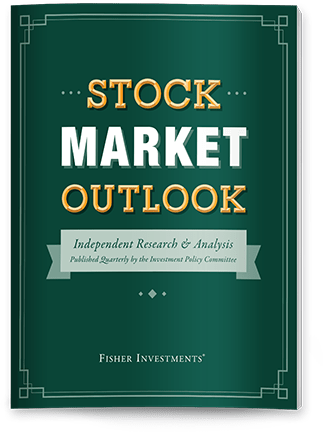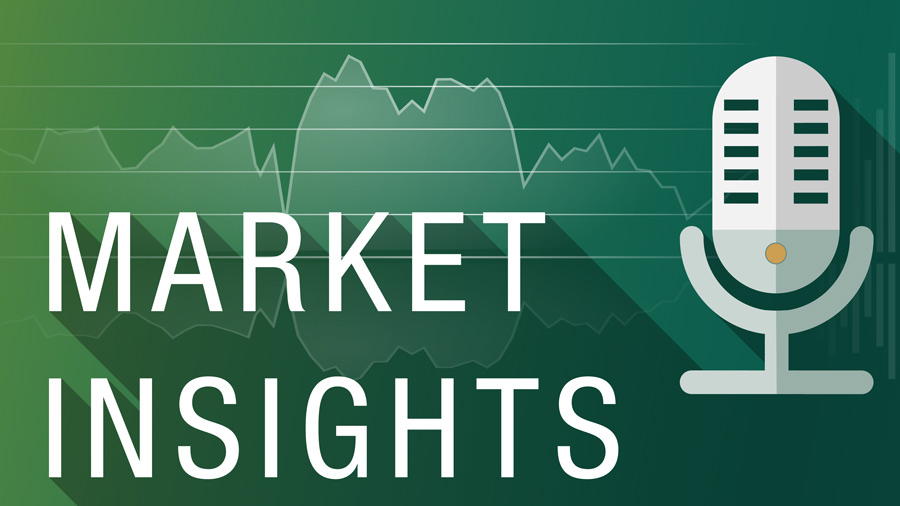Personal Wealth Management / Expert Commentary
How Are Businesses Navigating Tariffs?

Aaron Anderson, Fisher Investments’ Senior Vice President of Research and Investment Policy Committee member, explores the impact of tariffs on businesses and inflation, and how companies are adapting to today’s tariff environment. According to Aaron, tariffs are likely to push up prices for certain goods, but they don’t cause broad-based inflation. He notes companies often absorb some tariff-related costs, though some are passed on to consumers.
Aaron says the biggest inflation drivers tend to be the availability of goods, services and credit. He draws a comparison to COVID-era disruptions, when supply shortages and excess money supply (too much money chasing too few goods) drove inflation—neither of which are present today. Aaron believes current tariff levels are unlikely to cause widespread economic disruption or inflation.
View Transcript
Aaron Anderson:
Now, I think that's a very important question, and one that largely gets lost in the broader tariff discussion. Now, we could go on here for quite a long time talking about tariffs and their economic impacts, and are they inflationary or not, and are they just a good economic tool or not. But the core of this question comes down to another very important economic concept— the difference between price and availability. Because if we're talking about tariffs here, yes, it's true that tariffs are likely to increase the price of certain goods. I use that word certain very intentionally because tariffs aren't likely to drive broad-based inflation. But for certain goods where prices go up because of tariffs, companies might absorb some of those costs, but some of that's going to get passed on to consumers.
And so, there is a slightly higher price that might get paid for certain goods tied to tariffs, that's undeniable. But those goods are still available. As we look at how supply chains are operating around the world, you're really not seeing any signs of big supply chain issues whatsoever. If I think back to 2021 and 2022, when you had a real inflation problem, that was driven by a couple of forces. One was massive money supply growth. In the wake of Covid and the economic lockdowns we saw then, you had a lot of money pushed into the economy—by governments, by central banks around the world—that caused money supply growth to absolutely explode higher. And at the same time, you had big supply chain issues. Again, a lot of that tied to Covid. And so, you had a scarcity of goods, you had a lot of money chasing those goods, that caused the high inflation rates we saw back then. Neither of those conditions exist today.
Supply chains are operating very smoothly, although goods might become a little bit more expensive, those goods are available. So, as long as companies and individuals can get their hands on goods or services, no matter the price, the price they can deal with. It's the availability that ultimately matters most. Now, one way to see that is there's an index that's produced by the Federal Reserve System here in the US, called the Supply Chain Stress Index, that measures whether supply chain issues are getting worse or they're getting better, whether supply chains are operating normally or not, and happy to say today they look to be operating very, very normally. So, we don't have the same type of scarcity issues today that we had back when inflation was a real problem. And you can apply the same economic concept to other areas. Take interest rates as an example. People have worried in recent years that well, with higher interest rates, that came up quite a bit in 2022, especially, that higher interest rates means, maybe we're going to have a credit crunch, because higher interest rates make loans more expensive, and that means there's going to be less lending that happens and so forth.
That's really not true at all. What matters most is, are loans available, no matter the cost. Again, companies and individuals can deal with the cost of loans— they might have to make other adjustments to their businesses or their spending practices, but so long as they can get their hands on goods and services or they can get their hands on credit, the price of it matters a lot less than the availability. And whether we're talking about availability of goods and services and supply chain issues, all of that is operating very normally as I mentioned, the same is true on the credit side of things.
In fact, credit conditions, if anything, are improving a bit here. Yes, it's true, loans are a little bit more expensive today than they were a few years ago, but what really matters is, can people get access to credit and can businesses get access to credit. And absolutely they can today. So, what we're seeing here, whether or not you think of tariffs as being a good thing or a bad thing, we tend to think that we'd like to see lower tariffs, we think they add unnecessary costs and friction to the global economy. But is that enough to cause big economic problems or widespread inflation? We certainly don't think so.
Ken Fisher:
Hi, this is Ken Fisher. Subscribe to the Fisher Investment YouTube channel. If you like what you've seen. Click the bell to be notified as soon as we publish new videos.

Where Might the Market Go Next?
Confidently tackle the market’s ups and downs with independent research and analysis that tells you where we think stocks are headed—and why.




